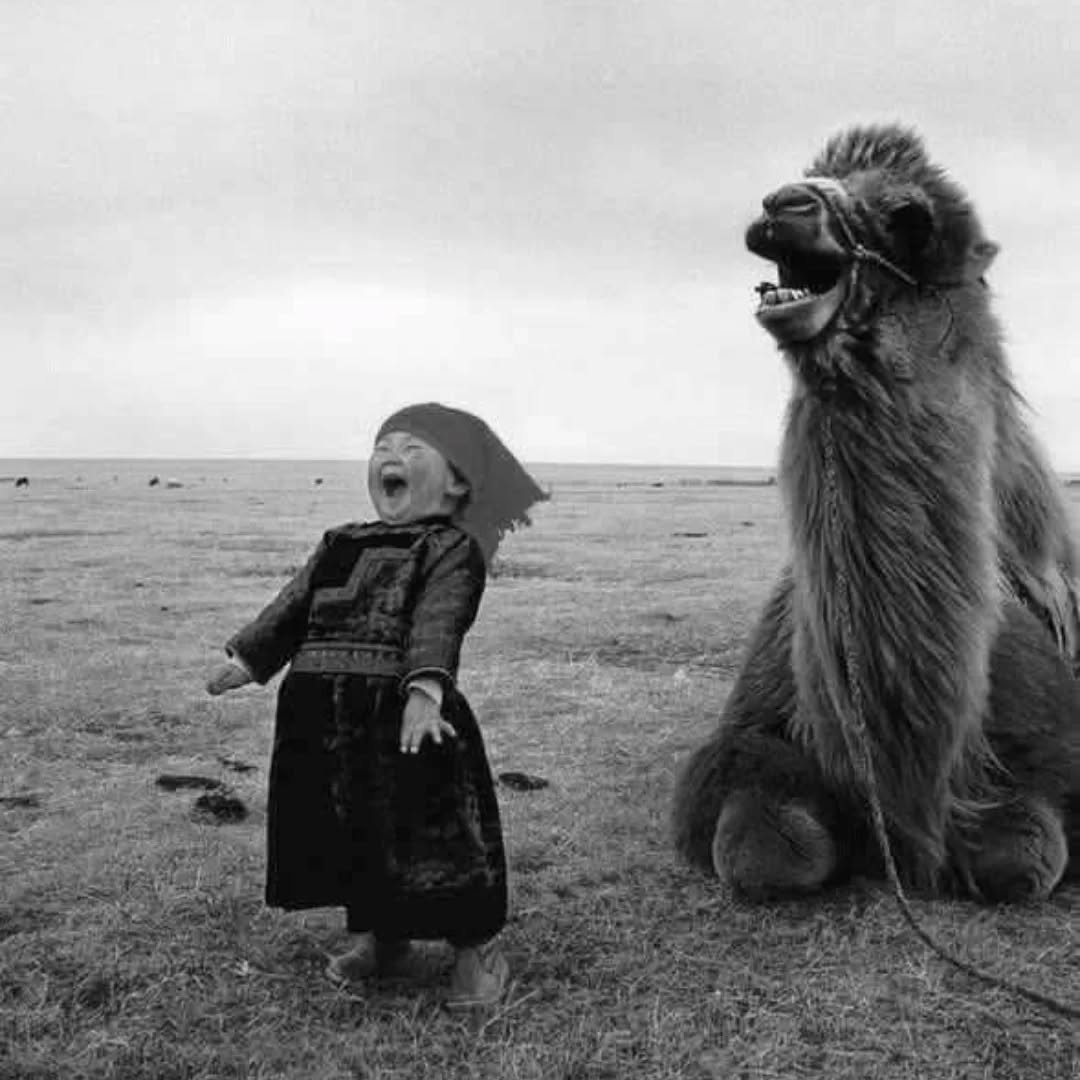 Go to English Version
Go to English VersionThis photograph could have been taken by anyone. Close enough and with a camera in hand, it was only a matter of waiting for the moment. Does that mean, then, that with a decent camera we can walk out into the street, start shooting, and challenge the legacy of a Cartier‑Bresson, to name an example? Possible, yes—yet improbable. Cartier‑Bresson defined what we now understand as the capture of the decisive moment. His immortality rests on hundreds of photographs—almost all of them flawless—where the magic of that instant manifested before his eyes, camera poised. Far too many times for it to be mere chance.
Life overflows with extraordinary moments which, if fixed in an image, would stand as timeless symbols of the human condition and of the monumental nature of the everyday. These moments move within trillions of utterly inconsequential scenes, devoid of poetic substance. Geniuses such as Bresson or Robert Capa seem almost magically to sense when the miracle is about to occur, anticipating those sparks of fleeting beauty. I recall an anecdote often told by Alberto Korda. He spoke of the funeral of Benny Moré and the presence there of one of photography’s giants: Cornell Capa. Korda, documenting the event, described how Capa, with very few exposures, captured images of tremendous impact—each one distilling the fabric of grief and sorrow that the farewell to El Bárbaro del Ritmo awakened among family, friends, and an entire people. Korda himself, no lesser a photographer, needed many attempts and a good measure of luck to find that elusive moment that would fix itself in collective memory.
A brilliant photograph seems to depend on whether you can sense that moment—read the parables of matter within a fleeting timeline—or on the sheer volume of images you can accumulate. Perhaps, among a hundred ordinary photographs, you might find a few that are remarkable. Even so, it takes sensitivity to choose the perfect angle, to master light and shadow, and to understand certain perspectives—not only optical but historical. To be Cartier‑Bresson is not as simple as it might seem. A hundred photographers shooting tirelessly every day from eight in the morning to five in the afternoon, paired with a razor‑sharp picture editor working full‑time, might—if fortunate—manage in the span of a century to emulate another Henri Émile Benoît Cartier‑Bresson.
With that said, we have before us this much‑loved photograph. Excellent for its content. Within it we find many of the principles that define a lucky image: the monumental essence of the everyday, the poetry of daily life, the unrepeatable moment, the symmetry of reality, and the quiet sorcery of the image itself. In my opinion, it is a minor photograph—though for many, it is an image that warms the heart. Why?
First, because it is a little girl, and whatever she does is bound to make us smile. Her slight forward curve suggests that she has just received an unexpected gift or witnessed something that struck her as deeply funny. It was unanticipated, provoking a genuine paroxysm of joy. She laughs with her whole body, with her mouth, with her clothes. Even the camel seems to laugh—though camels do not laugh but bellow—surrendering to the electrifying vibration of that instant.
The Context
The scene unfolds on what feels like a frozen plain. It was captured in 2003 by Han Chengli, and its subject is a five‑year‑old girl named Butedmaa. Chengli titled the work Inner Mongolian Child, after one of China’s five autonomous regions. It is not Mongolia proper, despite what the title suggests, but a rustic expanse steeped in Mongolian heritage, where great festivals revolve around wrestling, horse racing, and archery.
In the symbolic freedom that erupts in laughter so intense, released from any restraint, the scene evokes the deceptive freedom of vast empty spaces. Something in us responds unconsciously, and through sheer empathy we too feel free. Another factor that explains the image’s success is its artistic reframing, its selective focus. Everything extraneous—two or three animals that added nothing—was removed. The photographer retained only those elements that supported the central intention of the image. And though contemporary, the photograph went viral in black and white. Perhaps because such joy feels like something from the past, or because pure horizons are becoming rarer on the solid parts of the planet.
Why, then, do I not consider it a great photograph? I feel it was the image that surprised the photographer. It remains the record of a moment that is, after all, somewhat inconsequential—saying no more than what we see. I do not perceive that skill, that readiness to capture the decisive instant. He did not simply step out with a camera in hand to see what might appear, nor did he just stumble upon the girl and the camel. He was there, in that landscape, for reasons unknown. It is even likely he had seen the girl laugh before and sensed that the image might have potential. He waited for his moment—perhaps even provoked it. Does it matter? It is a beautiful image that has brightened many people’s days. In fact, it graced the cover of Women of China magazine in June 2005.
It happens.











Comments powered by Talkyard.